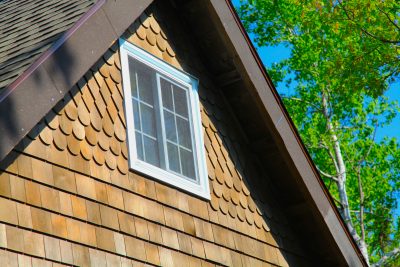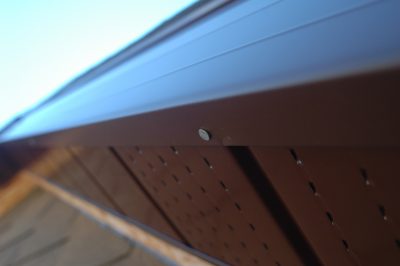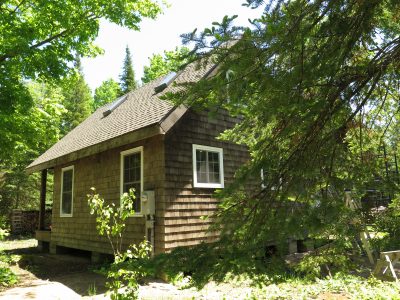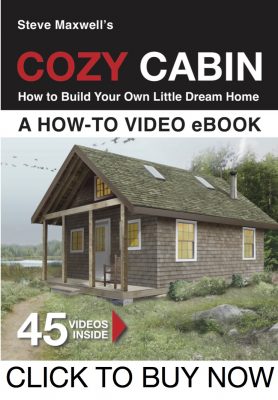 UPDATED 26Jul2019: Thousands of people who own beautiful lakeside cottages will tell you that owning the place is a ton of work. If this is your experience, or if you want to avoid being overwhelmed by a cottage that you plan to build or renovate, you’ve come to the right place. It’s all too common to see people bite off way too much when it comes to owning a seasonal home by the lake or in the countryside. This problem is made worse by the desire to create “natural” looking structures. The right kind of appearance is vitally important for keeping rural areas looking and feeling right, but it also means you might be pulling out your hair in a few years because of all the maintenance work you’ve created for yourself by going “natural”. This is where easy keeper building strategies can help.
UPDATED 26Jul2019: Thousands of people who own beautiful lakeside cottages will tell you that owning the place is a ton of work. If this is your experience, or if you want to avoid being overwhelmed by a cottage that you plan to build or renovate, you’ve come to the right place. It’s all too common to see people bite off way too much when it comes to owning a seasonal home by the lake or in the countryside. This problem is made worse by the desire to create “natural” looking structures. The right kind of appearance is vitally important for keeping rural areas looking and feeling right, but it also means you might be pulling out your hair in a few years because of all the maintenance work you’ve created for yourself by going “natural”. This is where easy keeper building strategies can help.
Cottage Plans: Use Cedar Sidewall Shingles

This is my favourite wood siding option because it looks so good and lasts so well. You can get more than 50 years life from sidewall shingles without any maintenance at all. No painting, no staining, no nothing. You get the beauty and natural appearance of wood, without the maintenance trap that most other forms of wood involve. Sidewall shingles also give you a lot of creative control. You can cut them into shapes and build patterns that look amazing. Eastern white cedar shingles weather to a medium or silver grey. Western red cedar shingles weather to a darker shade. I cut the decorative shingles used in the gable of the small place shown here before installing them in the peak. Click here for a detailed video lesson on using cedar sidewall shingles.
Cottage Plans: Non-Wood Decking is Great

This is a huge issue because maintaining a deck can be a ton of work – work that’ll take you away from the lake and leisure. Far few cottage and camp owners realize what’s required to keep a wood deck looking like more than barn board in a few years. Finishing and refinishing probably isn’t the reason you got a cottage in the first place, but you’ll spend time staining your deck on your hands and knees if you don’t do something to prevent it. Non-wood decking costs more than standard wood, but you’re buying both material and sidestepping all future costs for finishing and refinishing. It adds up. Non-wood decking looks quite good too, especially the kind with wood grain details embossed in the surface. It also lasts forever since it doesn’t rot. I’ve used plenty of non-wood decking material in my own projects and it’s great. Click here for advice on retrofitting an existing wooden deck to use non-wood decking materials. It works for docks and swim rafts, too.
Cottage Plans: Don’t Use Wood Fascia and Soffit

Soffit and fascia refers to the horizontal and vertical surfaces around the edges of a roof, and keeping wood finished properly in these places is insanely difficult. If you don’t go crazy from the trouble of this work, you will go crazy in the body cast they’ll give you after you fall off the ladder. Aluminum fascia (“fascia” is the vertical stuff) looks great on any building, no matter how natural the siding. Soffit (the horizontal stuff) is often something you can do away with altogether if you frame a roof with rafters. I use stainless steel nails to fasten the bottom edge of the fascia, with these nails driven into over-sized, predrilled holes in the metal. This sort of thing is important if you’re installing brown fascia because it picks up more of the sun’s heat. The aluminum expands and contracts a lot with changes in temperature, so the metal needs to be allowed to move with oversized holes or it will buckle and bend. Click here for an article on installing aluminum soffit and fascia.
Cottage Plans: Include a Covered Porch

There are two reasons a covered porch is better than an ordinary open deck, especially at a country place. First, you can enjoy the outdoors more often. Rain or sun, it doesn’t matter. In fact, sitting under the protection of a porch roof during a rain is one of the main reasons to own a cottage in the first place. It’s a beautiful and refreshing experience. On a practical level, a covered porch keeps windows and doors in good shape by protecting them from the full brunt of the weather. Click here for practical tips on building a covered porch from a guy who has built a few of them.
Cottage Plans: Keep It Small

Building way too big is a common mistake people make when planning a cottage or rural getaway. The whole reason for a country place is to enjoy the countryside, not to be a slave to maintenance and a mortgage. You really don’t need a monster cottage to enjoy beautiful rural spaces. A massive building is especially not what lakeside living is all about. There’s already enough too-big houses in the city and suburbs. Small really can be beautiful.
Want to build your own great cabin? My Cozy Cabin building course is a one-of-a-kind learning resource that includes plans, instructions, photos and videos for building your own classic 16×25-foot cabin. Front porch, a sleeping loft, real visible rafters and lots of wood – Cozy Cabin empowers even non-builders to succeed. This cabin has been built by hundreds of ordinary people around the world and folks love it. Click here to learn more about the course and its money-back guarantee.
